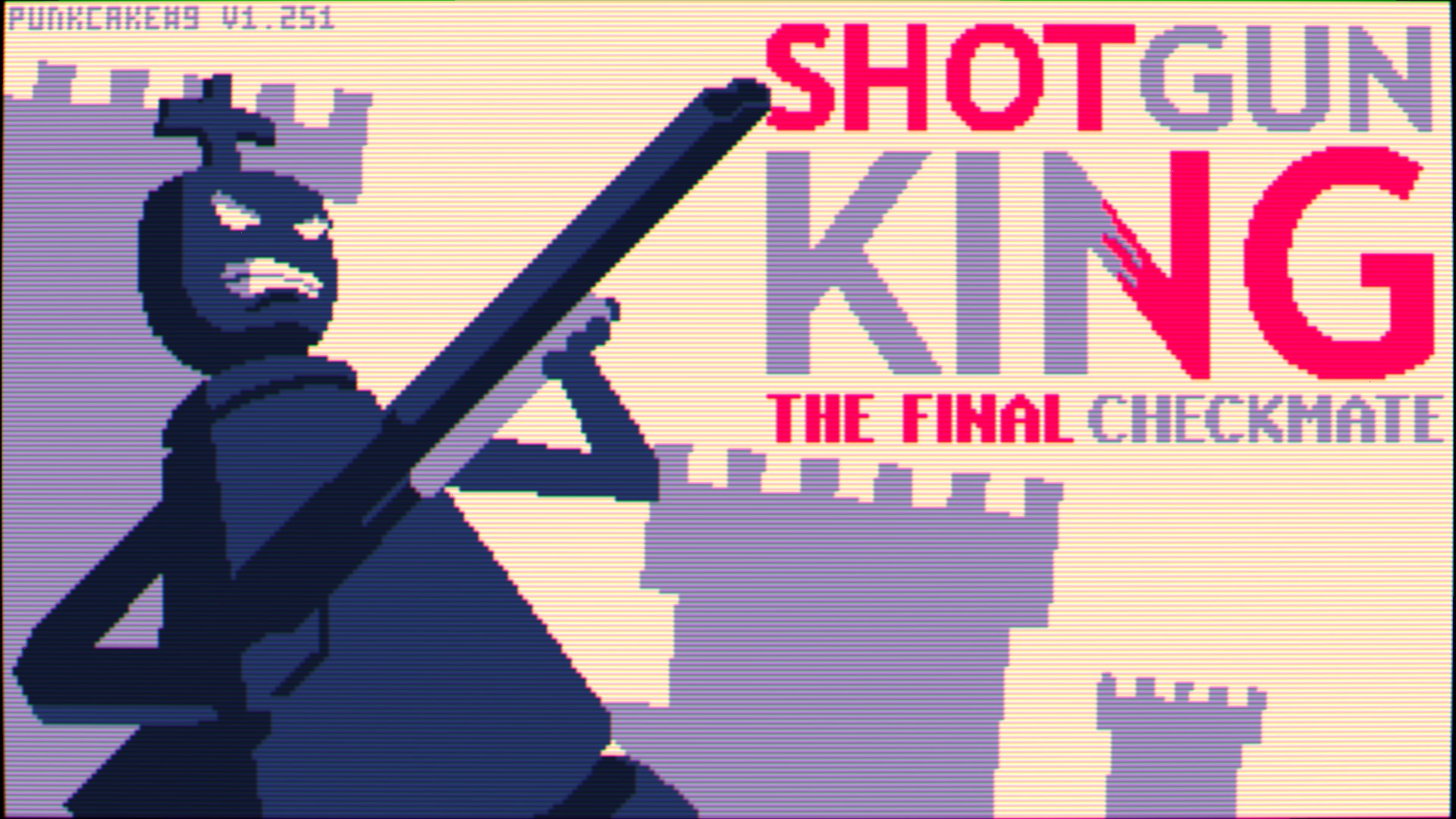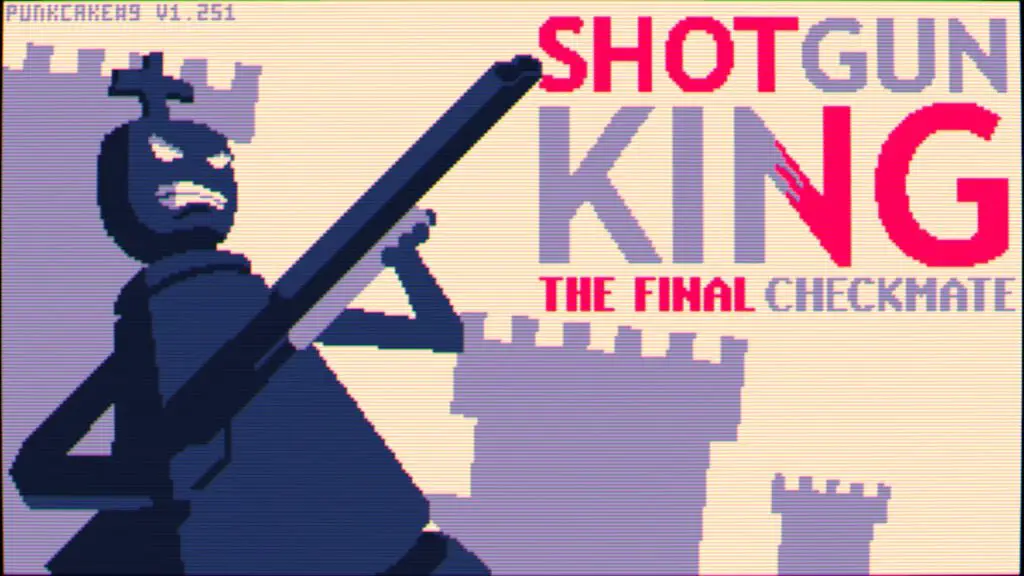
Like millions of people around the world, I am terrible at chess. Without exaggeration, I don’t think I’ve ever won a single match, against a human or a computer. So, the fact that I can’t stop playing PUNKCAKE‘s fast-paced chess roguelike Shotgun King, truly says a lot. I’m still pretty bad, don’t get me wrong. However, with upgrade cards, special abilities, and a freaking shotgun, that’s a chess experience I can get behind.
Story
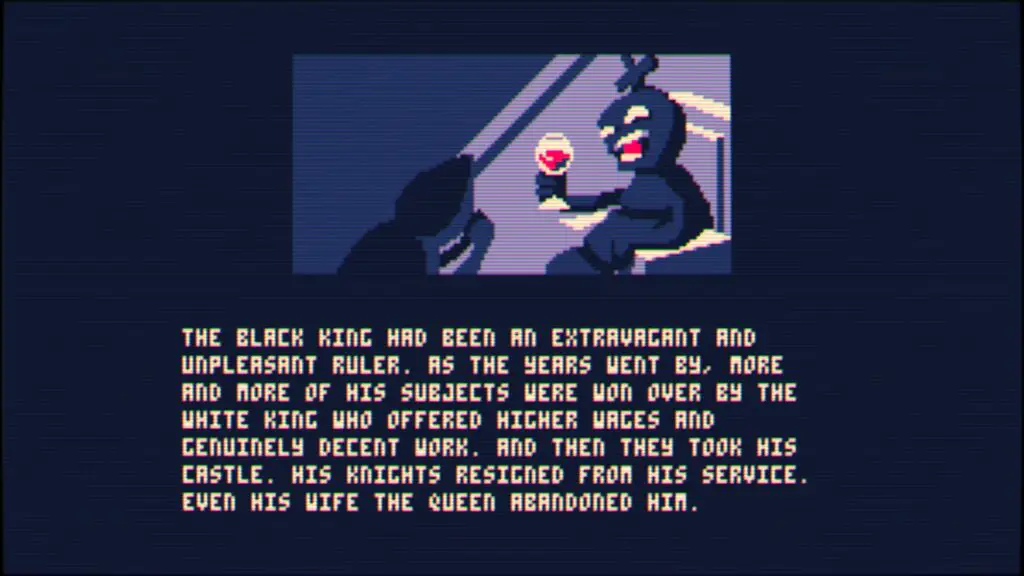
The hero of Shotgun King is the Black King, a cruel and tyrannical warmonger. He has oppressed his side of the chessboard since time immemorial. Eventually, his subjects had enough of his brutal reign. His pawns, rooks, knights – even his beloved queen – have defected to the White Kingdom.
The Black Bishop warned the king not to let his wrath overtake him. The tyrant, however, was deaf to his counselor’s advices, seething with a need for revenge. So, the monstrous monarch loaded his royal shotgun and set out to destroy the White Kingdom all by himself. Now, as the Black King, you’ll move around the chessboard, blasting other pieces to smithereens while avoiding checkmate.
Although the bare-bones narrative only exists to set the stage, it turns the chessboard into a real fantasy kingdom. There are hints of untold stories here: the alluring but dangerous queen, the tensions between pawns and bishops. At the moment, Shotgun King is still probably a one-off title. However, should the developers decide to add some more story, there is plenty to work with.
Gameplay
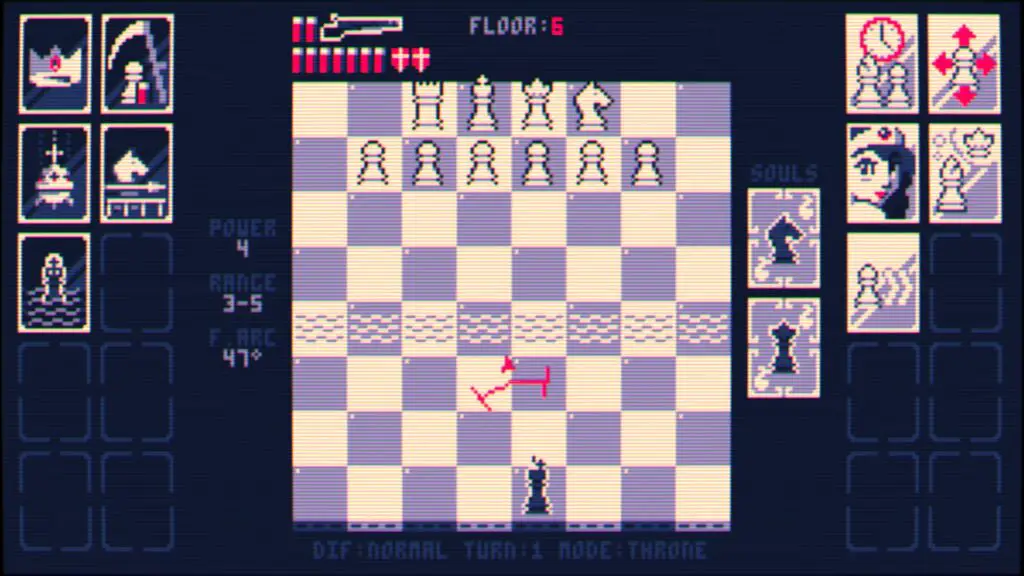
If you have even a basic understanding of chess, the gameplay in Shotgun King is very intuitive. Each piece moves as it normally would – but there are a few key differences. For example, in regular chess, the sides alternate to make a single move. In Shotgun King, every white piece has a speed rating, indicating how many turns they wait before moving. Multiple pieces can also move simultaneously. Finally, a piece indicates that it’ll move next by quivering.
Then there’s the royal shotgun. Instead of moving, the Black King can spend a turn firing his weapon – provided it’s loaded. Its spreading arc of fire can heavily damage a single close target, or lightly damage several faraway ones. It’s worth noting that the Black King cannot capture pieces by moving onto their square. He’s given up on such chivalrous tactics.
The shotgun can only hold two shells at a time, but reloads whenever you move. If you don’t have enough shells in reserve or the shotgun is fully loaded, the shell will go to your inventory. It’s very easy to find yourself cornered and out of ammo if you aren’t watching your supply carefully. So, finding a rhythm of moving and shooting is essential.
During the introduction, the Black Bishop explains that the king still holds dominion over his subjects’ souls. Destroying any piece, except a pawn or a king, lets you claim that piece’s soul. However, to do so, you need to have a free slot for it; at the start of a run you’re only able to carry one. Using a soul allows you to move like that piece once. Being able to jump like a knight or dart across the board like a bishop can easily get you out of a jam. So, it could definitely be worth freeing up a slot before finishing off a queen.
The goal of each floor is to eliminate the White King. However, there’s usually a legion of pawns and larger, more dangerous pieces defending the monarch. Once you defeat him, you’ll move on to the next floor – until the showdown with the boss. Being a king himself, your piece can’t move very quickly – and if you move into the capture range of an enemy piece they will take the Black King immediately, regardless of turn order. This will, of course, end the run.
Protecting you from unwise moves are the Folly Shields – of which you get two per floor. If your next move would let a piece capture you, the game will prevent the move, and the threatening piece will flash red. This warning costs a Folly Shield, and if you slip up, and you have none left, it’s game over. However, there are some situations the Folly Shields can’t stop. If killing a piece opens the way for one behind them to immediately capture you, the game won’t intervene.
Best of all, each board completed makes all subsequent boards on that run more complicated. Between levels, you get a choice of two pairs of cards – each has one upgrade for you and one upgrade for the opposing pieces. Upgrades for the Black King include greater ammo capacity, alternate firing modes, and even extra lives. The white team, on the other hand, will usually get more pieces, including the dreaded queen. There are also extra protections for the White King – like making him immortal as long as any knights are alive, or allowing bishops to fly. By the time you reach the final boss, you’ll be staring down a veritable army on the other side of the board.
Graphics & Sound
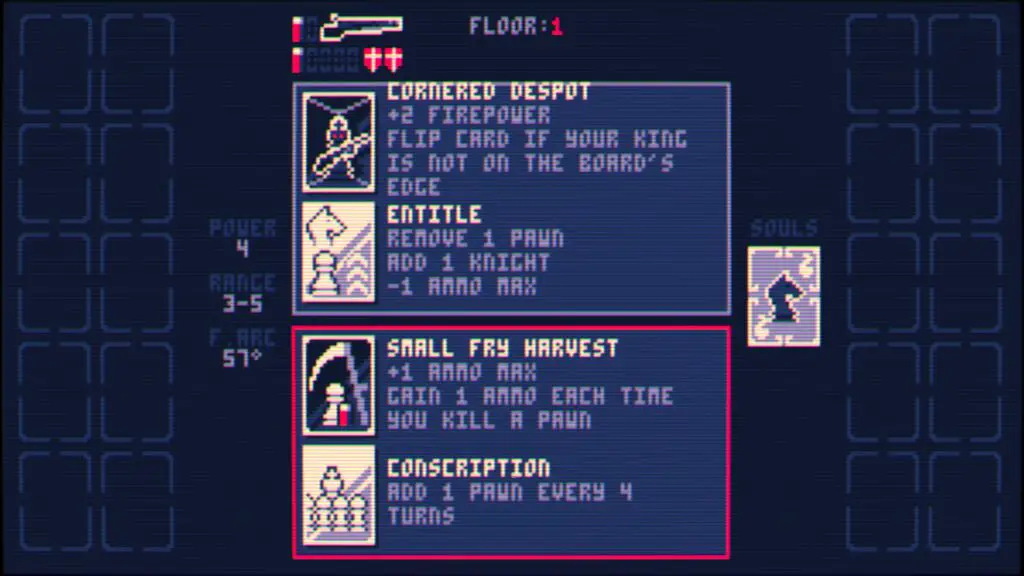
Shotgun King was created for the Ludum Dare Game Jam – which it won – so the graphics and sound are minimal. That said, they’re exceptionally well-done for a game this size. The upgrade cards have some lovely pixel art, and the CRT line effect on the screen evokes old-school DOS games.
The slow, tense music adds drama to the game, showcasing the razor-thin margin of victory or defeat – and the seething anger in the Black King’s heart. If and when you’re captured, the ensuing sound cue brings a sense of finality as a white piece brings the royal rampage to an end.
Firing the shotgun is immensely satisfying, which adds to the game’s replay value. However, for me at least, it resulted in a lot of preventable checkmates – as a trigger-happy player can open the path for a bishop or queen to corner them. Still, watching a rook shatter with a well-placed double tap gets the endorphins going.
Overall
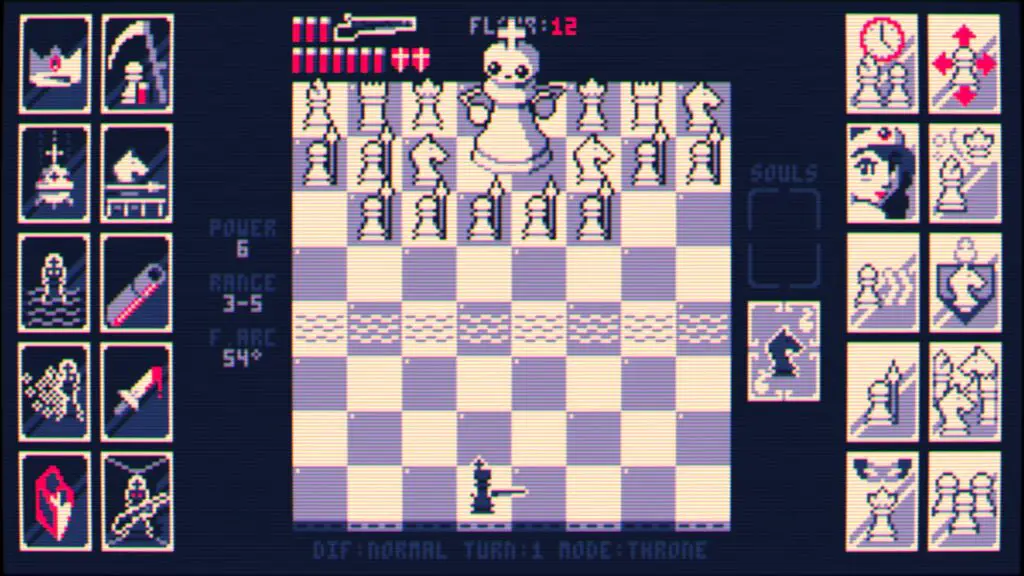
Shotgun King: The Final Checkmate is loads of fun, and a single run lasts twenty to thirty minutes at the maximum. There’s also an endless mode after you’ve successfully completed a run in the main game – for those who want an endless chess-with-firearms experience.
Small indie games have the advantage of simplicity – the more moving parts a game has, the more likely it is that they’ll interact in a way that’s broken or unexpected. Everything in Shotgun King works, and things like the shotgun’s perspective changing with your reticle show fantastic attention to detail. My only real complaint is that some of the upgrade cards could do with clearer descriptions.
The game is only 6 USD, which is reasonable for Shotgun King‘s size. You’ll get much more value back in hours played, and you may just find yourself saying “just one more game” several checkmates in a row. Don’t miss Shotgun King: The Final Checkmate; it’s a real blast.

